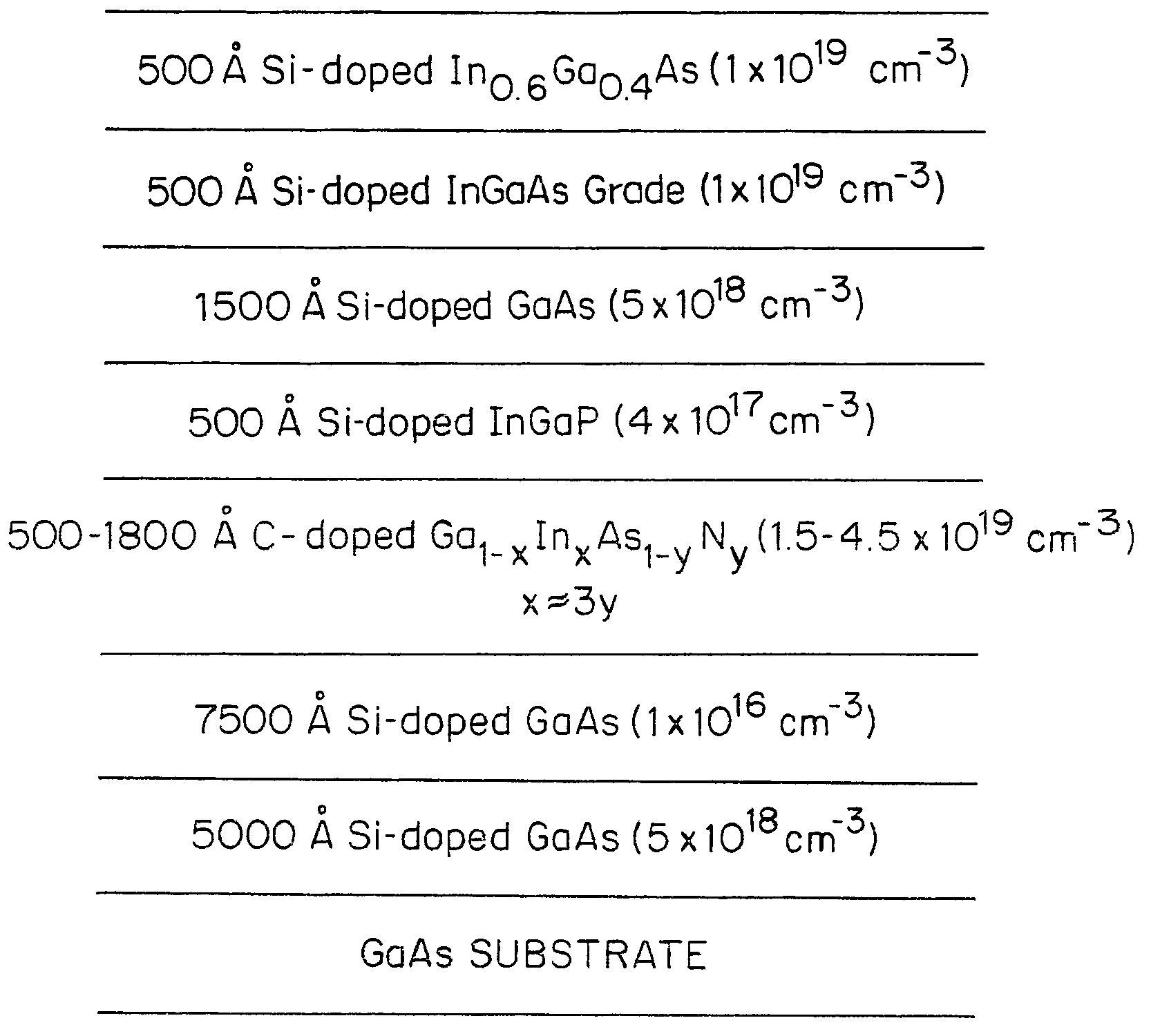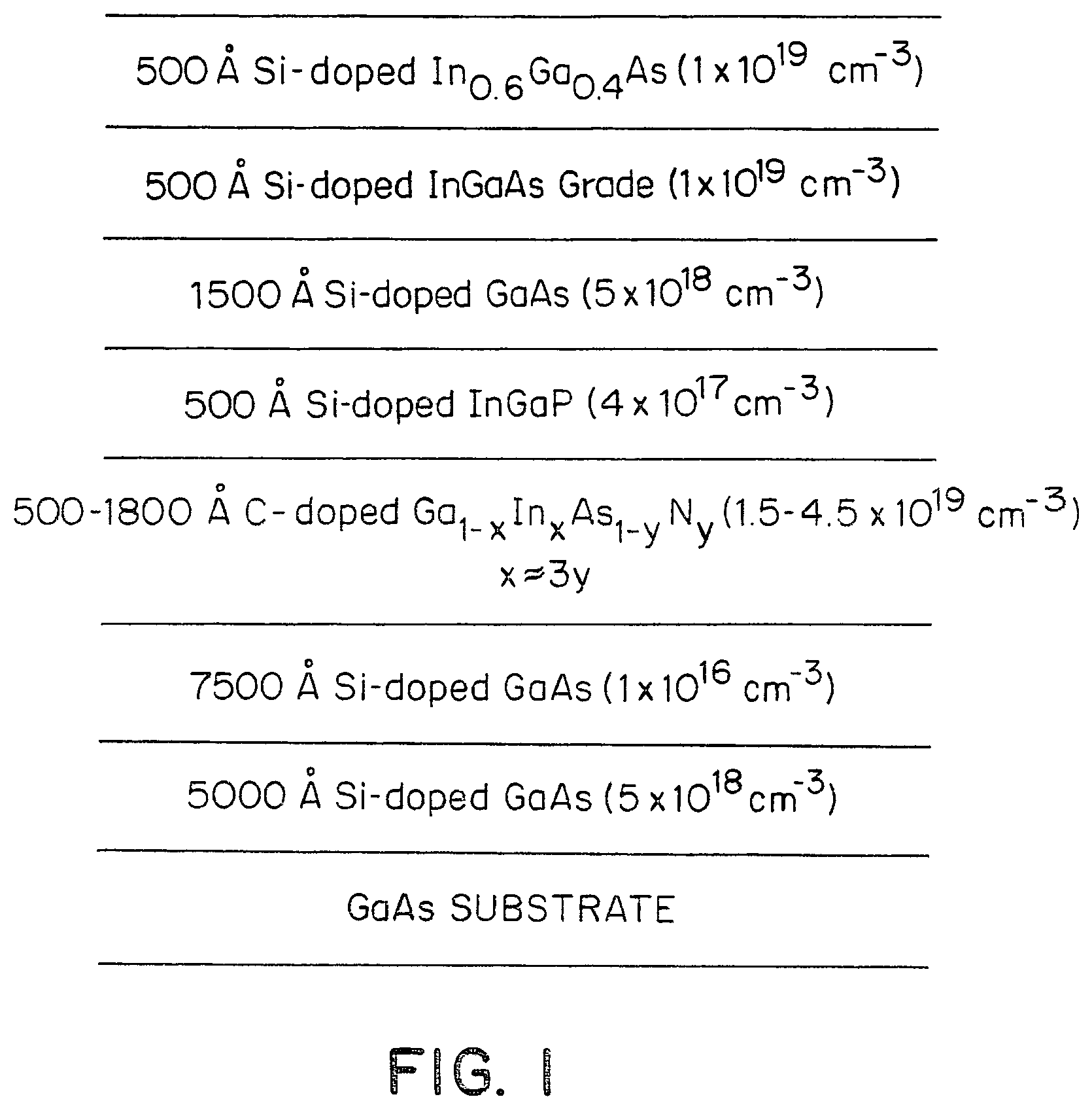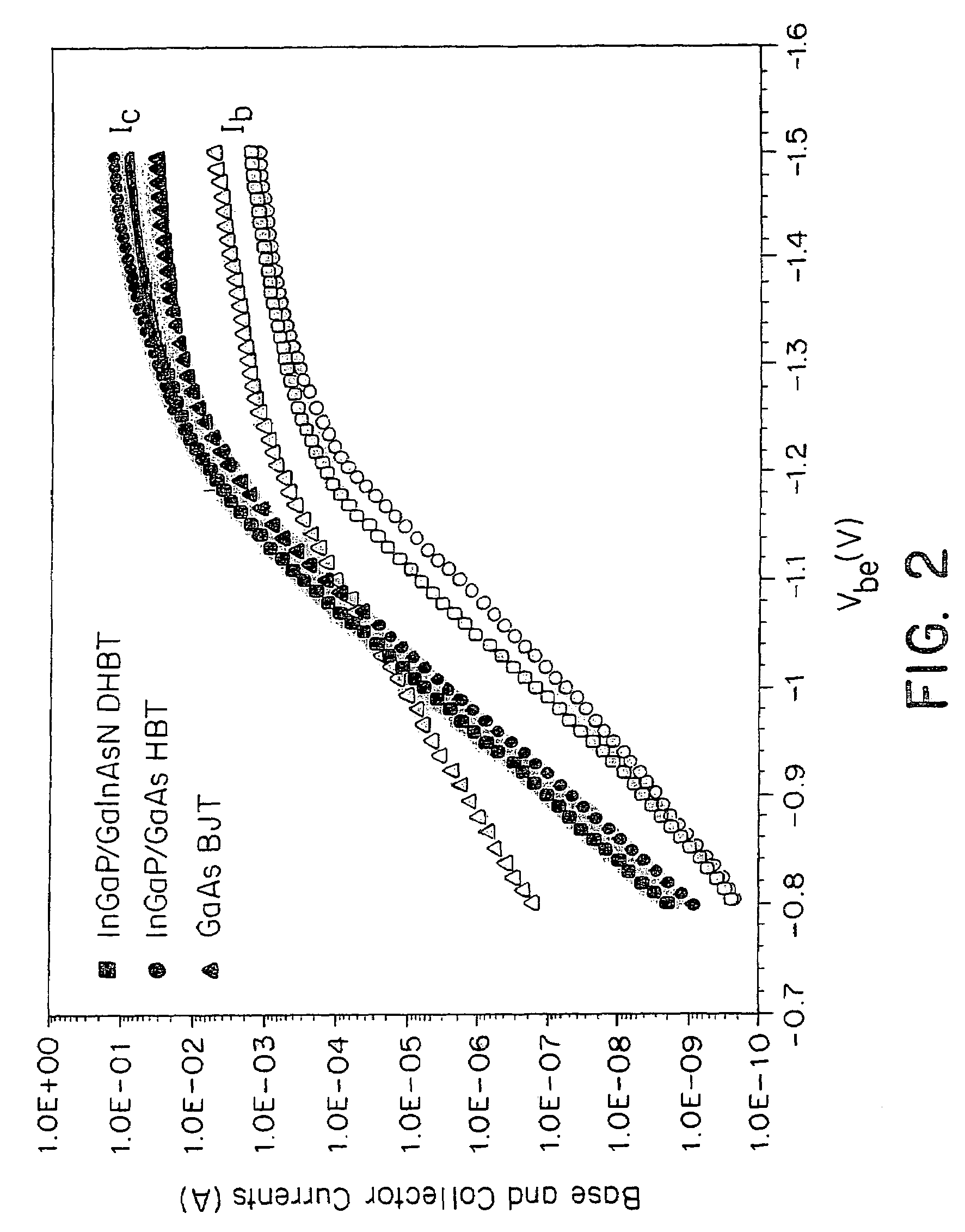Bipolar transistor with lattice matched base layer
a bipolar transistor and base layer technology, applied in the direction of basic electric elements, electrical apparatus, semiconductor devices, etc., can solve the problems of conduction band spike at the emitter-base interface, limit the usefulness of devices for low power applications, etc., to reduce the injection of reverse holes, and improve the management of voltage budgets
- Summary
- Abstract
- Description
- Claims
- Application Information
AI Technical Summary
Benefits of technology
Problems solved by technology
Method used
Image
Examples
Embodiment Construction
[0022]The foregoing and other objects, features and advantages of the invention will be apparent from the following more particular description of preferred embodiments of the invention, as illustrated in the accompanying drawings in which like reference characters refer to the same parts throughout the different views. The drawings are not necessarily to scale, emphasis instead being placed upon illustrating the principles of the invention.
[0023]A III-V material is a semiconductor having a lattice comprising at least one element from column III(A) of the periodic table and at least one element from column V(A) of the periodic table. In one embodiment, the III-V material is a lattice comprised of gallium, indium, arsenic and nitrogen. Preferably, the III-V material can be represented by the formula Ga1-xInxAs1-yNy wherein x and y are each, independently, about 1.0×10−4 to about 2.0×10−1. More perferably, x is about equal to 3y. In a most preferred embodiment, x and 3y are about 0.01...
PUM
| Property | Measurement | Unit |
|---|---|---|
| temperature | aaaaa | aaaaa |
| temperature | aaaaa | aaaaa |
| band gap | aaaaa | aaaaa |
Abstract
Description
Claims
Application Information
 Login to View More
Login to View More - R&D
- Intellectual Property
- Life Sciences
- Materials
- Tech Scout
- Unparalleled Data Quality
- Higher Quality Content
- 60% Fewer Hallucinations
Browse by: Latest US Patents, China's latest patents, Technical Efficacy Thesaurus, Application Domain, Technology Topic, Popular Technical Reports.
© 2025 PatSnap. All rights reserved.Legal|Privacy policy|Modern Slavery Act Transparency Statement|Sitemap|About US| Contact US: help@patsnap.com



